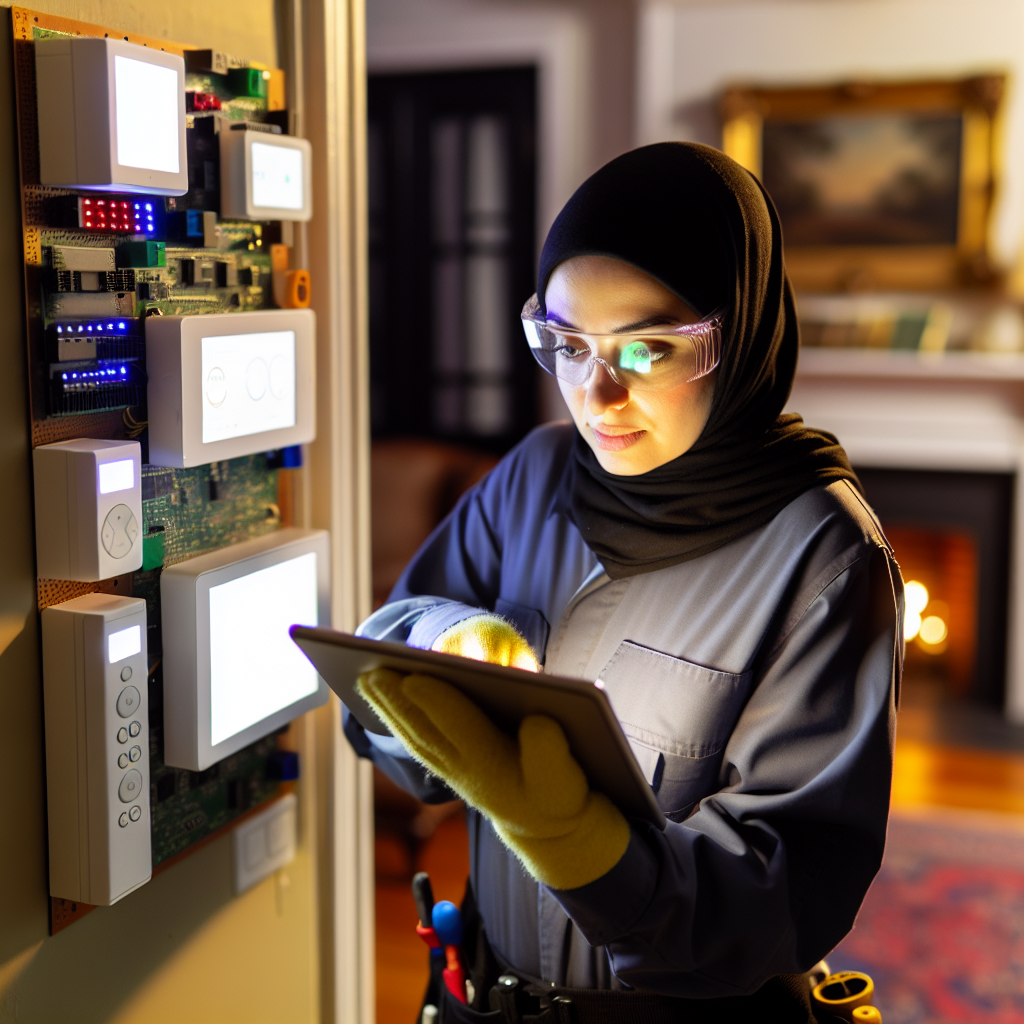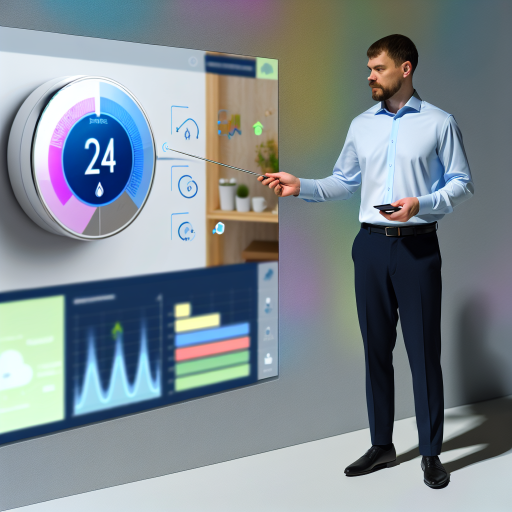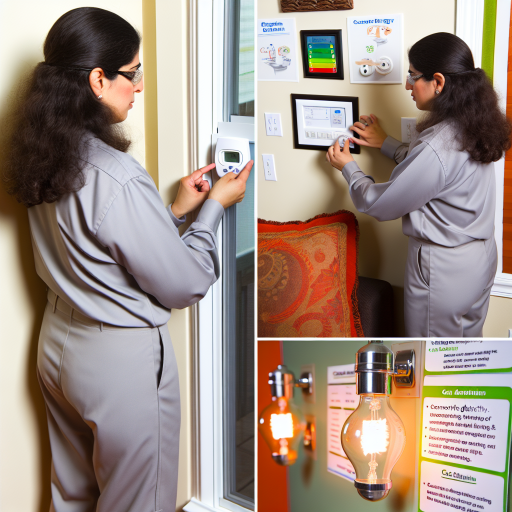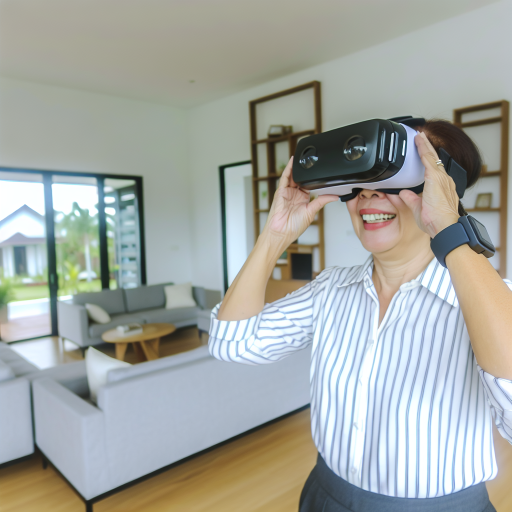Understanding Smart Home Technology: An Overview
Definition and Scope
Smart home technology refers to devices that connect to the internet.
These devices enhance convenience, security, and efficiency in homes.
Through automation, homeowners control systems remotely.
This technology streamlines daily tasks using smartphones or tablets.
Key Components of Smart Homes
Smart lighting allows scheduled control and remote access.
Smart thermostats optimize heating and cooling for energy savings.
Security systems offer real-time alerts via mobile connections.
Smart speakers facilitate voice-activated assistance for tasks.
Smart appliances simplify cooking and cleaning processes.
Benefits of Smart Home Technology
Smart homes increase energy efficiency significantly.
They also enhance security through real-time monitoring capabilities.
Convenience is a crucial benefit, allowing for time-saving features.
This technology promotes a more comfortable living environment.
Challenges in Implementation
Older homes often face difficulties retrofitting smart technology.
Compatibility issues may arise with existing electrical systems.
Installation costs can deter homeowners from upgrading.
Moreover, data security and privacy concerns linger in smart homes.
Future Trends and Innovations
The market for smart home technology continues to grow rapidly.
Advancements in artificial intelligence improve device functionality.
Integration with renewable energy sources promotes sustainability.
Future homes will likely feature even smarter, more connected solutions.
Benefits of Smart Home Technology for Older Homes
Enhanced Safety and Security
Smart home technology improves safety in older homes significantly.
For instance, smart locks offer keyless entry options.
These smart locks enable remote access for trusted visitors.
Additionally, security cameras monitor homes in real-time.
This feature helps detect and deter potential intruders.
Improved Energy Efficiency
Integrating smart devices can lead to substantial energy savings.
Smart thermostats adjust temperatures based on occupancy.
This technology reduces heating and cooling costs effectively.
Moreover, smart lighting systems minimize unnecessary usage.
Users can schedule lights or control them remotely.
Convenience and Comfort
Smart home technology offers greater convenience for daily tasks.
Voice-activated assistants allow hands-free operation of devices.
This makes managing household tasks seamless and quick.
Furthermore, automation simplifies routine activities significantly.
Users can schedule appliances to operate at their convenience.
Remote Monitoring and Control
Smart technology enables remote monitoring of home systems.
This feature allows homeowners to check on activities while away.
For example, monitoring security cameras from a smartphone is possible.
Also, controlling appliances remotely enhances peace of mind.
This is particularly beneficial during travel or prolonged absences.
Health and Wellness Monitoring
Smart home technology can support health and wellness initiatives.
Wearable devices can track vital signs and daily activity levels.
Additionally, smart home devices can remind users to take medications.
These functionalities contribute to overall well-being and independence.
Moreover, monitoring systems can alert family members or caregivers.
Challenges of Retrofitting Older Homes with Smart Technology
Understanding the Unique Structure
Older homes often feature unique architectural elements.
These structures can complicate the installation of modern technology.
For example, high ceilings may not accommodate ceiling-mounted devices.
Additionally, historical features may restrict wiring options.
Electrical System Limitations
Many older homes have outdated electrical systems.
These systems may struggle to support smart technology demands.
Older wiring lacks the capacity for high-powered smart devices.
Moreover, electrical panels may require upgrades.
Compatibility Issues
Compatibility between old and new technologies presents challenges.
Some devices rely on specific protocols for connectivity.
If the home’s wiring isn’t compatible, functionality suffers.
In some cases, homeowners may face a high learning curve.
Cost Considerations
Retrofitting an older home can be expensive.
Homeowners must consider the cost of new technology.
Moreover, additional costs come from necessary structural changes.
Budgeting for these expenses is crucial before moving forward.
Impact on Aesthetic Appeal
Homeowners often wish to maintain their home’s character.
Modern devices may clash with traditional designs.
Finding harmonious solutions can be challenging.
Additionally, installations may require invasive methods.
Regulatory and Compliance Challenges
Local regulations may impose restrictions on renovations.
Older homes often are subject to historical preservation laws.
This can limit the extent of smart technology integration.
Homeowners should research local codes before starting.
Maintenance and Longevity Concerns
Older homes may require more maintenance than newer ones.
This can lead to additional long-term costs for homeowners.
Smart technology still requires updates and monitoring.
Homeowners should factor in these maintenance aspects.
You Might Also Like: Smart Home Technology For Eco-Friendly Real Estate Solutions
Key Smart Devices for Modern Retrofits
Smart Lighting Solutions
Smart lighting enhances convenience and energy efficiency in older homes.
Install smart bulbs that connect via Wi-Fi or Bluetooth.
Consider systems that allow remote control and automation.
Utilize scenes to create different moods throughout your home.
Link your smart lights to voice assistants for easy access.
Smart Thermostats
Smart thermostats provide an economical solution for climate control.
They learn your habits and adjust settings accordingly.
This feature saves energy by optimizing heating and cooling.
Models like the Nest or Ecobee can integrate with existing systems.
Remote control via smartphone apps adds extra convenience.
Smart Security Systems
Enhancing home security is vital for safety and peace of mind.
Smart security cameras offer real-time video monitoring.
Many systems can alert you to motion or unusual sounds.
Consider doorbell cameras that provide two-way communication.
Integrate sensors to detect unauthorized entry or window opening.
Smart Plugs and Outlets
Smart plugs allow you to control any device remotely.
Use them for lamps, appliances, or heaters for convenience.
Set schedules to turn devices on and off automatically.
Integrate energy monitoring features to track usage.
This step helps identify opportunities for energy savings.
Smart Assistants
Smart assistants centralize control of all smart devices.
Devices like Amazon Echo or Google Nest Hub serve this purpose.
They provide voice control for added ease and accessibility.
Integrate them to manage lighting, thermostats, and security.
This creates a seamless smart home experience.
Smart Appliances
Modern appliances now come with smart technology built-in.
Consider smart refrigerators that help track expiration dates.
Smart ovens allow remote cooking programming and monitoring.
These appliances improve efficiency and save time in the kitchen.
Investing in smart appliances can lead to smart cooking solutions.
Learn More: Smart Home Technology For Real Estate Agents And Brokers
Integrating Smart Technology with Existing Home Systems
Assessing Your Current Home Systems
Start by evaluating your existing home technology and infrastructure.
Identify what systems are outdated and which are functional.
Focus on key areas such as lighting, security, and heating.
Gather information about your electrical capacity and network capabilities.
Consider consulting a technology professional for an in-depth assessment.
Choosing Compatible Smart Devices
Not all smart devices fit seamlessly with older home systems.
Research devices designed for retrofitting older homes.
Choose products that integrate easily with existing wiring and control systems.
Prioritize devices that support multiple platforms for convenience.
Popular options include smart thermostats, light bulbs, and security cameras.
Establishing a Central Control System
A central hub can streamline control of your smart devices.
Choose a hub that supports various brands and protocols.
Consider compatibility with both Wi-Fi and Zigbee or Z-Wave devices.
This central system simplifies management through a single app.
Some homeowners prefer voice-controlled assistants for added convenience.
Updating Networking Infrastructure
The internet is vital for smart home technology functionality.
Examine your current Wi-Fi coverage throughout your home.
Upgrade routers to support higher speeds and wider ranges if necessary.
Consider adding extenders or a mesh network for better coverage.
Ensure all devices can connect reliably to your network for optimal performance.
Implementing a Secure Smart Home Environment
Security is crucial as you integrate smart technology.
Change default passwords on all devices for added safety.
Regularly update firmware to protect against vulnerabilities.
Consider implementing a separate network for smart devices.
Utilize two-factor authentication wherever possible for extra security.
Enjoying the Benefits of Smart Home Technology
Once integrated, enjoy the convenience and efficiency of smart technology.
Smart devices can reduce energy consumption and improve comfort.
Remote monitoring provides peace of mind for home security.
Automation can streamline daily routines and tasks effectively.
Continual upgrades can enhance your home experience over time.
You Might Also Like: Smart Home Technology For Home Automation Beginners

Safety and Security Enhancements Through Smart Home Technology
Modern Security Systems
Smart home technology offers advanced security solutions for older homes.
Modern security systems include smart locks and cameras.
These devices provide real-time surveillance and alerts.
Smart doorbells allow homeowners to see visitors remotely.
Additionally, motion detectors can notify residents of unusual activity.
Remote Monitoring
Homeowners can monitor their property from anywhere using smartphones.
This feature enhances peace of mind for those away from home.
Systems now integrate with various applications for easy access.
In case of emergencies, immediate alerts can be sent to users.
Automation and Control
Automation improves safety by controlling lights and devices remotely.
Smart lights can be programmed to simulate occupancy.
This deters potential intruders by creating the illusion of presence.
Furthermore, homeowners can set schedules for exterior lighting.
Health and Safety Services
Smart home technology can monitor health conditions for older adults.
Devices can alert family members or caregivers in emergencies.
Fall detection systems provide immediate assistance if needed.
Additionally, smoke detectors can send alerts directly to smartphones.
Integration with Emergency Services
Smart systems can be integrated with local emergency services.
This ensures faster response times during crises.
For example, security alarms can automatically notify authorities.
Homeowners can customize their system settings for specific needs.
Learn More: The Impact Of IoT-Enabled PropTech Devices On Real Estate Management
Energy Efficiency: How Smart Technology Can Help Older Homes
The Need for Energy Efficiency in Older Homes
Older homes often lack modern energy-efficient solutions.
They may have outdated insulation and heating systems.
This contributes to increased energy consumption.
Consequently, homeowners face higher utility bills.
Smart Thermostats
Smart thermostats enhance energy management in older homes.
These devices learn your schedule and preferences.
They adjust heating and cooling automatically for comfort.
This reduces energy waste significantly.
For example, the Nest Learning Thermostat adapts to daily patterns.
LED Lighting Solutions
Upgrading to LED lighting offers immediate benefits.
LED bulbs consume less power than traditional incandescent bulbs.
They also last much longer, reducing replacement costs.
Further, smart LED options can be controlled remotely.
This allows users to manage lighting even when away from home.
Smart Power Strips
Using smart power strips can dramatically save energy.
These devices shut off power to devices in standby mode.
This eliminates energy drain from electronics when not in use.
Thus, they help lower overall electricity bills.
Popular models include those by Belkin and TP-Link.
Home Energy Monitors
Home energy monitors provide valuable insights into usage.
They track energy consumption and identify inefficiencies.
This data helps homeowners make informed decisions.
For instance, Sense Energy Monitor can pinpoint energy hogs.
Smart Appliances
Smart appliances also contribute to energy savings.
They often have energy-efficient ratings and features.
Many can operate during off-peak times, saving more money.
Models from Samsung and LG offer advanced energy management options.
Integrating Smart Technology in Older Homes
Integrating these technologies improves energy efficiency overall.
Homeowners can start with small upgrades and expand gradually.
Professional installations may be necessary for certain devices.
This approach modernizes older homes while maintaining their charm.
Ultimately, smart technology offers both comfort and savings.
Future Trends in Smart Home Technology for Retrofits
Emphasis on Energy Efficiency
Energy efficiency will dominate future smart home technologies.
Homeowners increasingly seek solutions that lower energy consumption.
Smart appliances will play a vital role in this trend.
Companies like EcoHome are developing appliances with smart energy management features.
Enhanced Home Security Systems
Home security technology continues to evolve rapidly.
Modern retrofits will feature integrated security solutions.
These systems will include smart cameras and alarms.
For example, SafeGuard offers real-time alerts through mobile applications.
Smart Lighting Solutions
Smart lighting will become increasingly popular in older homes.
Homeowners will use smart bulbs to reduce energy usage.
Additionally, these bulbs will allow for customization and scheduling.
Companies like BrightTech are leading the way in smart lighting innovations.
Home Automation Integration
Future trends will emphasize seamless integration of devices.
Home automation systems will connect diverse smart devices effortlessly.
This integration enhances user experience and convenience.
For instance, HomeSync allows users to control various systems from one app.
Voice-Controlled Devices
Voice-activated devices will continue to gain traction.
These devices simplify interactions with technology in the home.
Users will enjoy the convenience of controlling systems through voice commands.
Popular brands like VoiceHome provide advanced voice recognition capabilities.
Modular Smart Home Systems
Modular systems will allow for easy upgrades and expansions.
Homeowners will choose specific modules suited to their needs.
This flexibility makes smart technology more accessible to older homes.
Companies like ModularLife focus on customizable solutions for various home designs.
Additional Resources
Culture, energy and climate sustainability, and smart home …
What are your must have smart home devices and why? : r/smarthome




